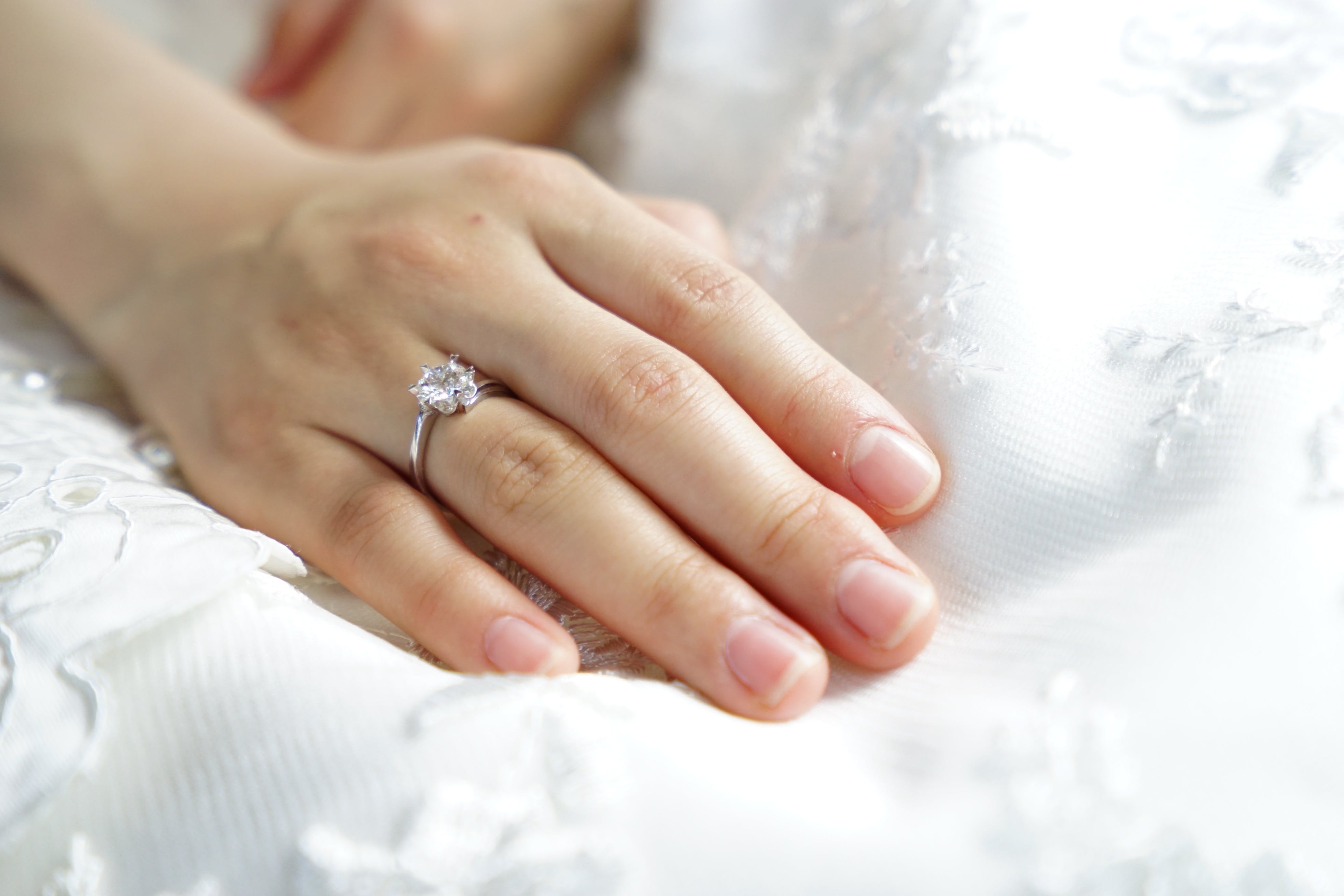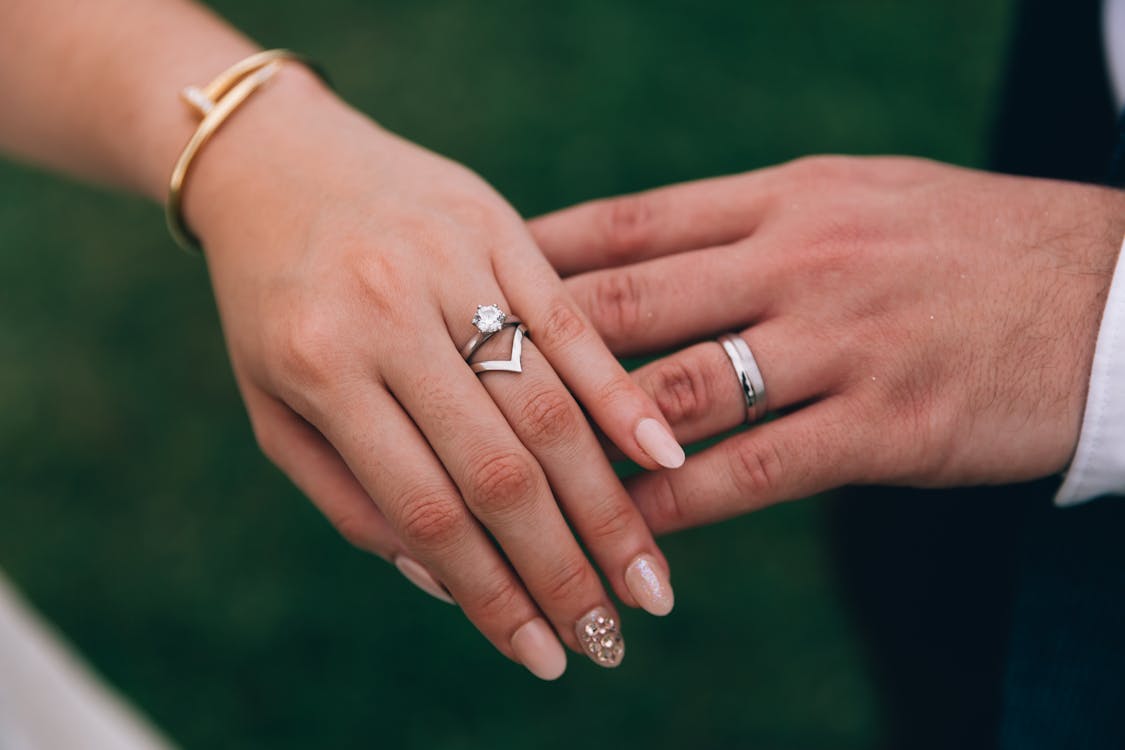- Call us: (213) 489-1767

When it comes to picking an engagement ring for your proposal, the majority of people around the world tend to think more about the diamond quality and size than they do about the type of metal.
Sure, diamonds might be a girl's best friend, but the truth is that they don't make half as much of an impact unless they are paired with the right precious metal to show them off to their very best. Although white gold rings are easily the favored choice, there is a wide range of engagement ring metals and materials from the traditional white, rose and yellow gold and white metals including platinum and silver to copper alloy, tungsten, ceramic and even wood.
As well as considering diamond shapes and the 4Cs of diamond quality, you shouldn't forget just how important it is to make sure that you choose an engagement ring setting that is going to suit the personal preferences and lifestyle preferences of the intended wearer.
Here is a handy guide to deciding between all of the popular choices of materials and metal types that are used by the diamond engagement ring industry. The perfect diamond engagement ring is going to be different for everybody, but following this general guide on metal for engagement rings will hopefully help steer you in the right direction on issues like durable metals, expensive metals, hypoallergenic metals, soft metals, harder metals, metal color and more.
Gold - The Most Popular Metal

Gold is the most common choice for engagement rings, predominantly yellow gold and white gold: yellow due to its warm, complementary hue that pairs well with diamonds and various gemstones and white because it enhances diamonds' scintillation and fire.
Gold is graded in karats (with a k, not like diamond carats, with a c!). The purest form is 24-karat gold. 18-karat gold contains 75% gold and 25% other metals, making it more durable than 24-karat gold, which is nearly pure but softer and prone to scratching.
Most gold rings aren't made of pure gold because pure gold is soft and orange in color. Instead, jewelers create gold alloys by blending gold with metals like copper, nickel, and zinc, resulting in different colors and strengths.
If you're on a budget, you can opt for vermeil rings, which feature a layer of 14K or 18K gold bonded to sterling silver, providing a classic gold look at a lower cost. While 14K gold and 18K gold are popular choices in the United States, white gold, mixed with nickel and often coated with rhodium for added durability and a silvery appearance, offers a more affordable alternative to platinum. Rose gold, created by mixing gold with copper and occasionally silver, has gained popularity for its vintage appeal.
Platinum - The Most Expensive Metal

Platinum is the world's rarest precious metal, forming part of the exclusive platinum metal group alongside palladium and rhodium. Its scarcity, being 30 times rarer than gold, contributes to its elevated retail value.
Platinum is prized for its exceptional durability, strength, and workability. Unlike gold, a platinum ring consists almost entirely of pure platinum without a mixture of metals and alloys.
Platinum boasts hypoallergenic properties and resistance to wear and tarnish. Its grayish-white color enhances the brilliance of diamonds and is often mistaken for white gold due to its silvery appearance. However, platinum's rarity and density make it a pricier choice for rings, and its weight provides a substantial feel on the finger. If you admire platinum's look but are budget-conscious, white gold is a more affordable option.
For those who choose platinum and wish to maintain its luster, a periodic and cost-effective buffing can keep the ring looking like new.
Sterling Silver - A Less Common Choice

Sterling silver, composed of 92.5% silver and 7.5% another metal, typically copper, is stronger than pure silver but remains relatively soft compared to alternative ring materials. This softness makes silver susceptible to dents and scratches, and it's prone to tarnishing, requiring regular cleaning.
Silver's distinctive quality lies in its bright white appearance, though it lacks the durability of platinum or gold. While significantly more affordable, silver is not commonly used for everyday jewelry, such as engagement rings.
To maintain silver's luster, it's advisable to remove silver rings before handling household cleaners to prevent damage and store them in a cloth pouch to prevent scratching and tarnishing.
A useful tip for silver enthusiasts is to opt for a rhodium plating dip, which offers protection against scratches and tarnishing, extending the longevity of the silver rings.
Other Alternative Metals
There are plenty of other types of metals that you might want to consider outside of the usual gold metals and silver metals. Some other less common ring metals that are still worth considering include:
Palladium
Palladium, belonging to the platinum family, boasts remarkable durability and resistance to discoloration, similar to platinum. Its white color is complemented by a lightweight nature. Palladium rings, made of 95% pure palladium, are rarer and pricier compared to gold or silver options.
Tungsten Carbide
Tungsten carbide, a popular choice for men's wedding rings, is highly durable with a lasting shine. It resists scratches and dullness but can shatter under significant force and it cannot be resized due to its inability to be cut or soldered. Ranked at nine on the Mohs hardness scale, tungsten carbide may cause scratches when in contact with other metals if worn daily.
Titanium
Titanium, known as the strongest metal on Earth, is both exceptionally durable and lightweight, often displaying a silvery hue but also available in black. While it has been a staple for men's wedding bands, there's a growing presence of titanium engagement rings with diamonds in tension settings.
Similar to tungsten carbide, titanium is a very hard metal, scoring a 9 on the Mohs hardness scale, and it's challenging to manipulate, making it unsuitable for resizing. Additionally, titanium is hypoallergenic, appealing to those with metal sensitivities.
Cobalt
Cobalt, also known as cobalt chrome, offers a fresh and durable option for wedding rings and engagement rings with its bright white color that resembles white gold but costs significantly less. It's an ideal choice for everyday wear, being hypoallergenic and requiring minimal maintenance, even with rugged use.
Cobalt stands out for its exceptional scratch resistance, resistance to corrosion and bending, all while remaining lightweight and comfortable. While silver-toned cobalt is highly popular, black cobalt is also in demand, providing a distinctive choice for those seeking a unique style.
Stainless Steel
Stainless steel, with its silver-gray hue, presents an exceptionally durable and unique option, making it ideal for individuals with hands-on professions, active lifestyles, or sensitive skin.
Choosing The Best Metal For Your Diamond
If you already have a precious stone picked out for your engagement ring, then it is important to bring the best out of your diamond. Keep these key factors in mind when you get to the stage of trying to find the perfect metal for your chosen brilliant diamond.
- High-clarity diamonds (D-to-F range) shine best in platinum or white gold settings.
- Yellow or rose gold settings may dull the brilliance of your diamond but can offer a vintage look.
- For lower clarity diamonds, yellow or rose gold settings can complement and enhance the diamond's color.
- Diamond cuts with larger facets, like emerald cuts, may reveal more color, so consider your preference.
- Fancy color diamonds, such as pink or blue, pair well with white gold or platinum to accentuate the color.
- Browns and yellows can harmonize with yellow or rose gold settings.
- Be cautious when using black metal settings, as they can either enhance or diminish the diamond's color, depending on the design.
Are There Any Other Considerations?
To help you make an informed decision on the perfect engagement ring, here are some of the peripheral considerations that you might want to keep in mind alongside things like personal style and patina over time between the wide range of styles. If you can find a balance between all of the factors mentioned in this article, we have no doubt you will be able to settle on an excellent choice of metal to complement your diamond color and diamond settings perfectly.
- Endurance matters. Titanium, tungsten carbide, and cobalt cannot be resized, so precise sizing is crucial to ensure long-term fit across daily wear.
- Practical and affordable options. Stainless steel, cobalt, and titanium are corrosion-resistant, making them ideal for individuals with active lifestyles or those exposed to water, like saltwater.
- Metal consistency. Opt for the same metal for both your engagement and wedding bands to avoid color variations. Even subtle differences between 14K and 18K gold or white gold and platinum can become noticeable when compared side by side. Consistency ensures a harmonious and timeless look.
At Stein Diamonds, we are very proud of our collection of diamond engagement rings in many different styles and metals. We also offer a custom ring service.
